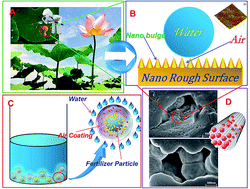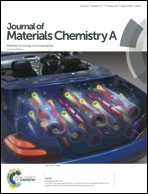Superhydrophobic controlled-release fertilizers coated with bio-based polymers with organosilicon and nano-silica modifications†
Abstract
Although bio-materials for controlled-release fertilizers (CRFs) have been developed rapidly because of their low-cost and green and sustainable properties, the release characteristics of these CRFs still face problems because the coating is often hydrophilic with many micro-holes. In this paper, a novel coating material was developed to coat fertilizers using bio-based polyurethane (BPU) derived from liquefied wheat straw (LWS). Organosilicon (OS) and nano-silica (NS) were also used to modify the BPU to increase the nanoscale surface roughness and reduce the surface energy, and thus to make it superhydrophobic. The nutrient release characteristics of the superhydrophobic BPU coated fertilizer (SBPCF) were greatly enhanced, compared with the unmodified BPU coated fertilizer (BPCF). This was because the nanoscale surface roughness of the SBPCF prevented water from contacting the coating material. In addition, the nanoparticles on the SBPCF surface also block the micro-holes on the coating and thus reduced the entrance of water. The results suggest that the new coating technology can create a superhydrophobic surface on CRFs and thus improve their controlled-release characteristics.



 Please wait while we load your content...
Please wait while we load your content...